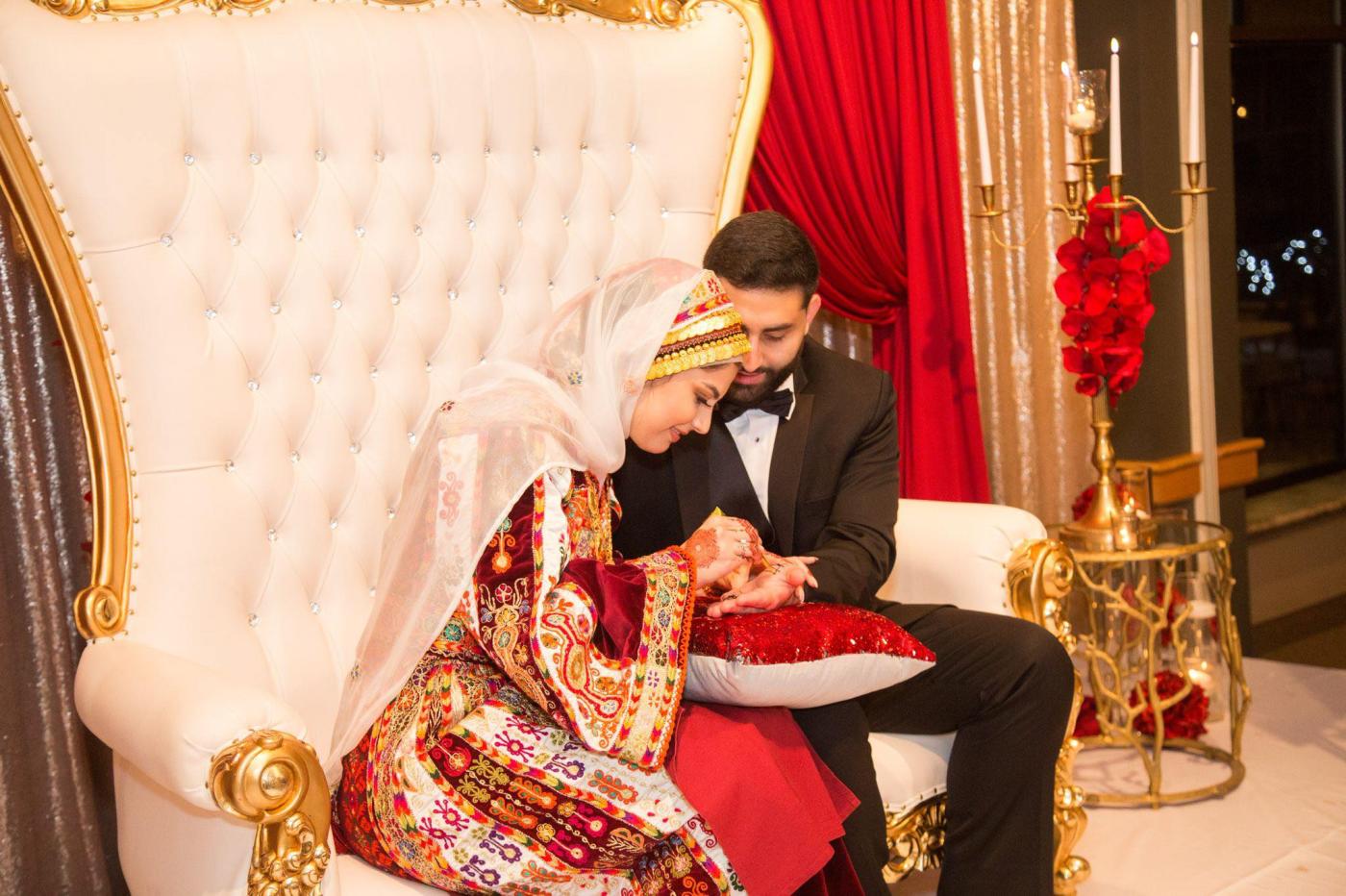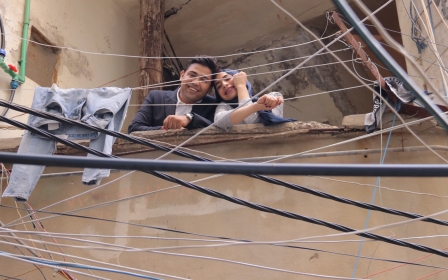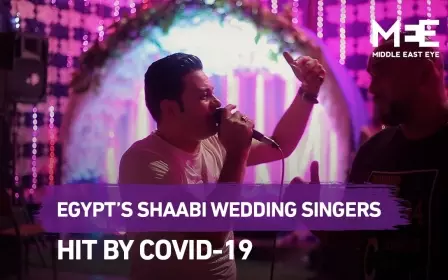Henna wa zaffe: An inside look at Palestinian wedding traditions

The first thing that anyone should know about Palestinian weddings is that they do not happen in one day.
The ceremonies and traditions, and the joy that comes with them, can’t be contained in a short space of time, and will often spill over into several days, sometimes even a week.
Over the years, Palestinian weddings have changed, particularly for the many living in diaspora, who have resorted to altering certain traditions and creating new ones. Some of these differences have travelled back to Palestine, where the influence of other countries can be seen.
However, a number of iconic practices continue to feature heavily in Palestinian weddings, with generations of heritage, rich in symbolism, passed down from generation to generation.
Here, in the first of a series, Middle East Eye explores what happens at a traditional Palestinian wedding. Stay tuned for the next part, which will be published next week.
New MEE newsletter: Jerusalem Dispatch
Sign up to get the latest insights and analysis on Israel-Palestine, alongside Turkey Unpacked and other MEE newsletters
Tulbeh
One tradition that is rarely messed with, even in diasporic Palestinian communities, is the tulbeh, which means "asking". This tradition involves the groom’s family visiting the bride’s family to formally ask for her hand in marriage.
This can happen any time before the wedding, and remains an essential first step of the wedding process. The asking of the hand in marriage is reserved for an elder in the groom's family, and the response is also given from an elder, respected figure from the bride’s family.
This small and intimate ceremony takes place in the home, with mainly immediate family from both sides present. Tea, coffee and traditional Middle Eastern sweets are served to mark the initial step of the happy occasion.
Sahra
Between the initial formality of asking for the bride’s hand in marriage, and the wedding day itself, there is room for more parties and celebrations.
Sahra translates to an evening party, which is attended by friends and family, lasting into the late hours of the night and into the early hours of the morning.
Some families will choose to do this together, while others prefer to celebrate separately, but regardless of how it’s done, food, dancing and music are staples.
One particular tradition that may raise eyebrows is the public shaving of the groom.
This will take place during the sahra, in front of the many guests, where the groom’s family will lather his face and give him a close shave. Guests will break out into cheers and songs. The idea behind the tradition is that the groom is left with glowing skin, and will look pristine on his wedding day.
Henna
This part of a quintessential Palestinian wedding is reserved solely for the women. The henna usually takes place at the sahra or can have a dedicated day of its own, and is an evening that brings the closest female friends and family members of the bride together.
Today, the henna is sometimes incorporated into the bridal shower, where women will gather and sing traditional Arabic songs that express joy, love and celebration.
The henna night allows the women to bond together when making the henna paste, which is spread out on a tray and adorned with flowers, before being scooped up and piped onto the hands of the bride.
The women will sit around and decorate each other’s hands, arms and feet with a henna paste, forming intricate patterns and letting it dry. For Palestinians, the natural dye, which reveals a vibrant rusty orange colour once dried, is believed to represent people’s connection with the earth and joyous occasions.
This ancient tradition, which is seen across several other cultures, also allows the women in the family to make arrangements and decorations for the wedding, and have a final celebration, dedicated specifically to the bride, before the wedding day.
Before a bride and groom enter their new home, some will press a handful of the henna into the doorframe, in a bid to bring in good luck and blessings, before passing over the threshold.
Food
It’s only an authentic Palestinian wedding if the amount of food being served could feed a small nation.
In many parts of the West Bank, mansaf is the traditional dish served at major events, both sad and festive. Mansaf is prepared differently across the region, but it generally consists of chunks of lambs served atop a dome of rice, which is itself on top of a layer of bread.
The mansaf is usually accompanied by yogurt or jameed, a Jordanian-Bedouin fermented yoghurt made from goat's milk.
Fattah, a food which connotes celebration across the Middle East region, is also a go-to at Palestinian weddings.
Another favourite, hailing from Hebron, is qidra, which means "pot". This dish consists of rice, lamb and chickpeas, and is spiced with nutmeg, cinnamon, cardamom, garlic, cloves and limes, giving it a warming and hearty flavour.
Qidra is usually made in large quantities in a clay pot and cooked in a wood fire oven, making enough to feed extended family and friends. To add to the celebration, once the food is cooked, the pot is cracked open in a dramatic celebration, allowing the aroma of the food to spread around and the food to be shared.
Tatreez
Richly embroidered thobes, which are a key aspect of Palestinian weddings, reflect the bride’s heritage through the carefully stitched embrodiery.
Although embroidery features widely in Palestinian clothing and crafts, the most ornate designs are saved for the wedding.
Some of the designs honour the bride’s hometown, others have motifs and symbols which carry special meaning stitched on their dress. Coins, jewellery and lavish fabrics are also incorporated into the designs, which are often hand-made by women in the family.
The preparation for making the bride’s embroidered thobe can begin months or years before the wedding day.
Music, zaffe and dabke
One of the most distinctive features of a Palestinian wedding is the zaffe, known as the wedding march. This procession is marked by singers, musicians, dancers, and wedding guests who escort the bridal party: they may escort the groom to the bride’s house, or the bride and groom to the church or the mosque.
In more modern weddings, a zaffe will mark the entrance of the bride and groom into the wedding reception hall.
Throughout the wedding ceremony, songs can be heard honouring the bride and expressing joy for the newlyweds. Many of the songs also commemorate Palestine, it’s culture and heritage.
The sahjih is a line dance that is particularly popular amongst men, and garners a great deal of attention because of how much of a spectacle it is to watch. During the dance, one singer will call out a verse, lauding the groom, and the guests and other dancers will respond, echoing the lyrics.
The dabke, an energetic step dance performed at celebrations to a background of Palestinian folk songs, is also central to the wedding. The circle and line dance requires skilled footwork, and has numerous variations depending on the area the family hail from.
The ringing of the zaghrouta, the celebratory ululating sound made by women, is a pronounced aspect of Palestinian - and many Middle Eastern - weddings. The loud sound lifts the spirits of the guests and well-wishers present.
In some parts of Palestine, women will take part in a candle ceremony, where they carry out a special dance, passing on lit candles to each other, sharing joy and light with the bride.
Frad
As the wedding draws to a close, the bride will usually go off to live with her husband in their new home.
However, the traditions continue after the wedding day itself, as it is customary for the bride to visit her family one week later, for a dinner called the frad.
The groom’s family also attends the dinner, allowing both families another opportunity to bond.
Attending a Palestinian wedding is like witnessing a microcosm of Palestinian culture and all it holds dear: family, love, music, community, and land.
As the poet Moussa Hafidh says: “If Palestinian weddings were to stop, our heritage would end."
This article is available in French on Middle East Eye French edition.
Middle East Eye delivers independent and unrivalled coverage and analysis of the Middle East, North Africa and beyond. To learn more about republishing this content and the associated fees, please fill out this form. More about MEE can be found here.








